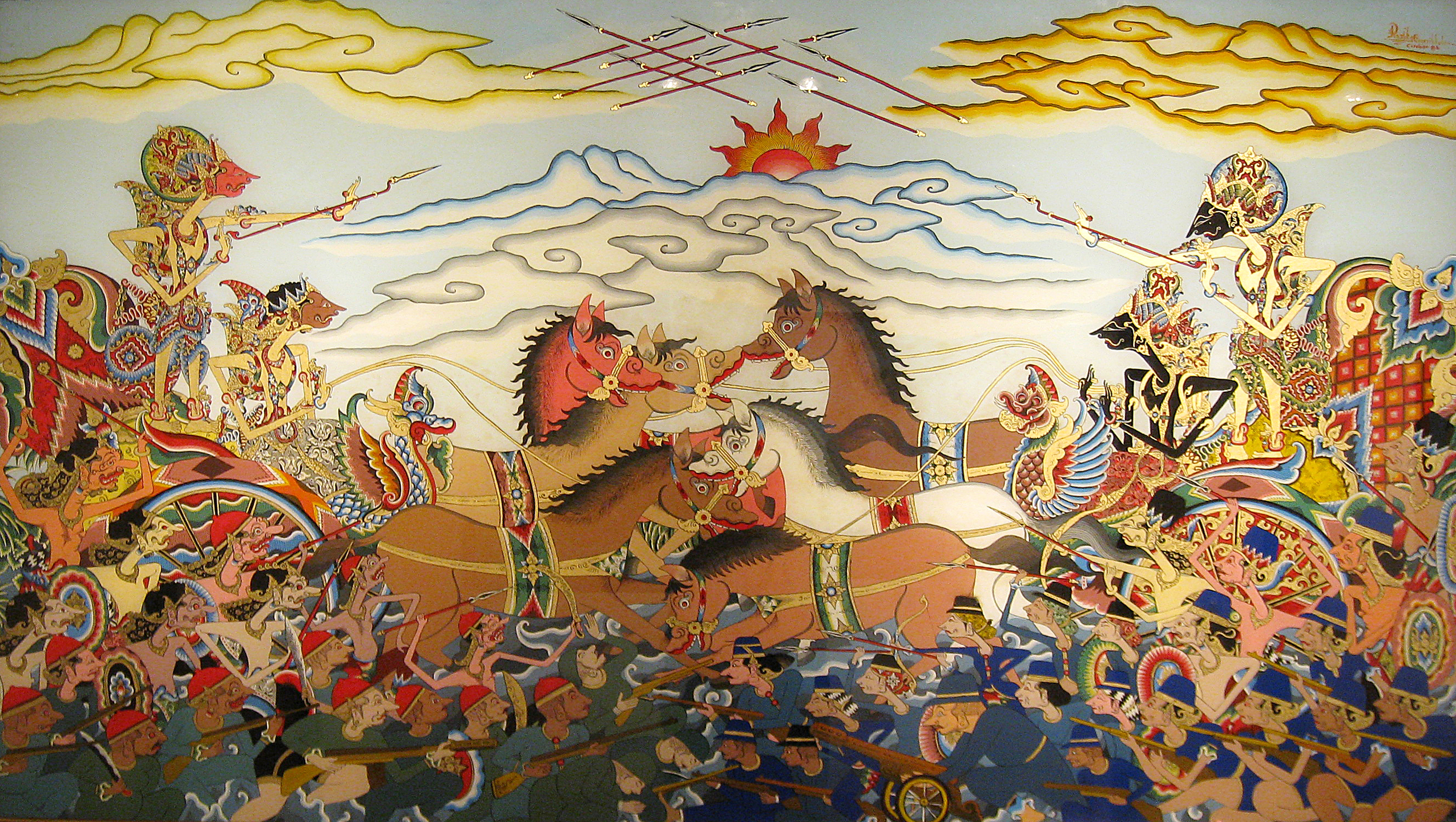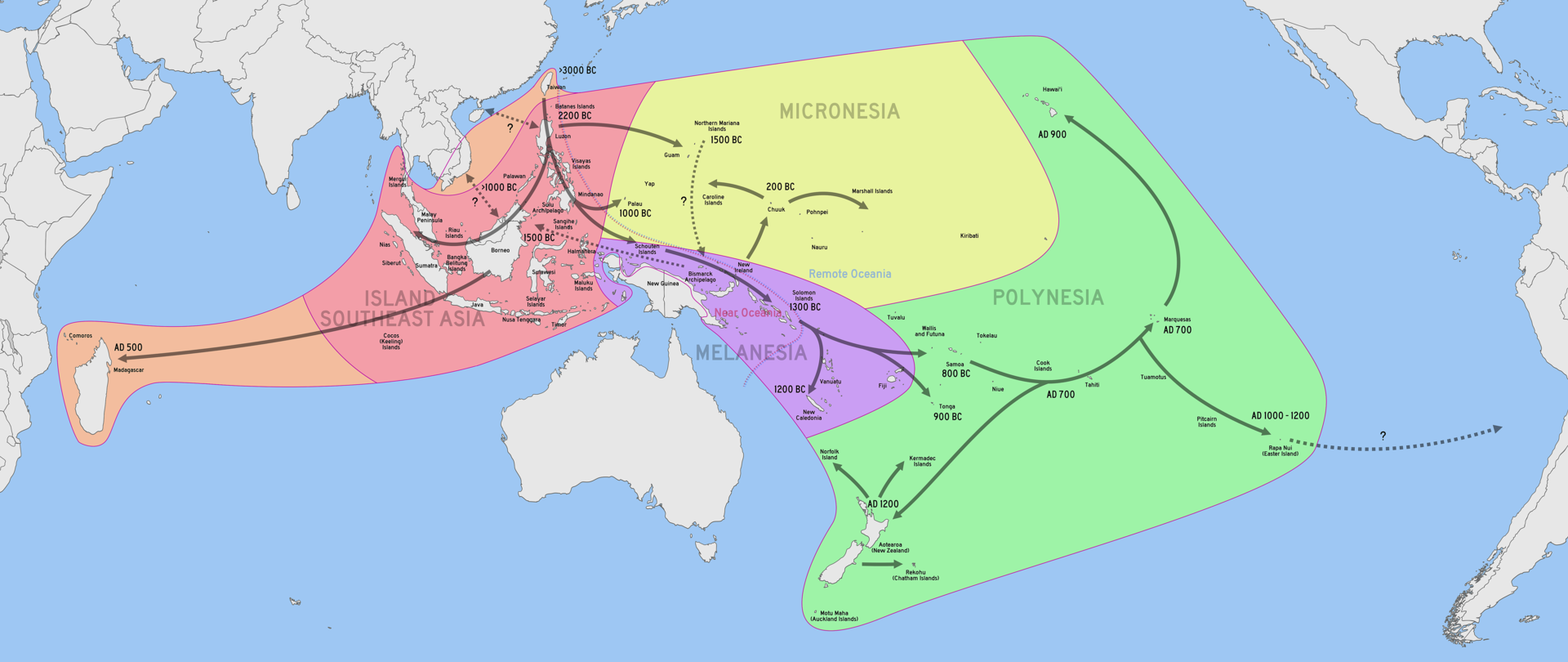Family Reunion

"Painting of Bharatayudha battle in Wayang style" by Gunawan Kartapranata - CC BY-SA 4.0
The painting above, available on Wikimedia, is of the Bharatayuddha, a Javanese translation of the Vedic period Mahabharata. The conflict depicted took place roughy 3,000 years before present, by most estimates, on the Indo-Gangetic plain. A Google Maps search of Kurukshetra will reveal the city alleged to be the site of the conflict. Zoom out from that position and you'll find the Indo-Gagnetic plain in fully glory. 
When I look upon that plain, I see home. There, arose the Indus Valley Civilization, one so early that its language remains unattested and its script undeciphered. It is in this plain that the Vedas are preserved by oral tradition and memorization, until finally recorded, providing some of the most important sources for Indo-European language reconstruction in the surviving record, through its preservation of Vedic Sanskrit.
The story is a familiar tale of dynastic conflict between the Kauravas, eldest of the direct patrilineal descendents of Dhritarashtra, and their cousins the Pandavas, five brothers of legend and virtue, who shared a beautiful wife. Our Western ears are reminded of the Angevin houses, York and Lancaster, and this strikes me as likely more than coincidence. This narrative is early in the history of Indo-European and so likely survives in various forms all across Europe. When we perform comparative linguistic analysis of the words surrounding the religious myths of the several Indo-European languages, we often find that stories of various deities and historical figures are not merely facially similar in their plot elements, but also involve characters with etymologically related names. From this we can construct a Proto-Indo-European mythology of reconstructed language, and the stories so uncovered can be found all over the planet, in a march from the Eurasian Steppe and the Gangetic plain to the rest of the soil of the Earth.
I'm reminded at this juncture of the story of *Manu- and *Yemo-, who were strolling along the primordial chaos of uncreation with their great cow, when Manu kills or castrates Yemo, and creates the World with the remains. *Trito or the third man, is given cattle, has it stolen from him, and must steal it again. Cattle-thieving would remain an important theme thereafter. In this story we recognize the tale of Romulus and Remus, Cronus and Oranus, Zeus and Cronus, the poetic Edda, even Cain and Abel (though in that case not by genetic linguistic descent). Now, much of this reconstruction sources early Vedic texts themselves, and I do not believe the characters of the Kurukshetra War share the etymological relationships of these other figures. Yet, the motif seems to be recurrent throughout our Indo-European history, of the battle of brother and cousin, for the finest calf.
By the time Proto-Indo-European becomes English, Anglo-Norman, Law French, Cumbrish, Celtic, et cetera, for the Plantagenets of Yore to reiterate this ancient drama, all knowledge of the heimat is lost to us. Yet, the War of the Roses seems to find perfect representation in this Indonesian Cirebon glass painting of the ancient conflict. The English are no less concerned with the placement and distribution of kingdom, land and cattle, and we would later use livestock as a pretense to destroy the commons. The horse reigns supreme in our memories of either.
Naturally, these are extremely complex movements across history, place and time, and Indo-European finds local customs, words, linguistic substrates, et cetera, all over the place. Yet, the common narrative is worth pointing out, because it had to have happened first, somewhere. Race revisionist historians proved to us that we are far too quick to assume that, events which have tended to take place, inevitably would have tended to take place. This we often cannot know, and the drama of brother against brother, cousin against cousin, is so pronounced in such a variety of sources that one starts to wonder, is this an ancient feud? While the Lost Cause narrative of our Civil War is so facile, it is remarkable how touched we are by the subject of the mutual courage held by brothers on their way to kill each other. Do these stand out in our minds because human beings, of a nature, kill their brothers for the plenty of their cattle, or, because of a nature, we do not?
Perhaps in the ur-heimat of the human race, we do just still remember one brother, who killed another. Amalek was my cousin by Esau, and yet betrayed my people on the road from Egypt. Firstly, it is remarkable to me that I was instructed to know his name. It would seem to be like us, to wish to remember. Would even Amalek have so betrayed us by no example, living as he did in a geographic region inhabited by speakers of many different Indo-European languages? Perhaps the ur-betrayal is even older than PIE; perhaps word of it traveled from Mesopotamia to the Indus Valley Civilization, in tongues unknown to us today.
I like to wonder this because, it is true that the entire race of humanity is related to one another. Meet anyone on the planet and you certainly share, a pair of parents, somewhere in history. Could we have perhaps done better from the beginning? Is contention and fractitiousness intrinsic to us, or could the archetype of all betrayals have been the archetype of all birthday-remembrances? In the Indo-European history, we consume ourselves over and over again, conquer and reconquer lands held by speakers of related languages, sometimes extinguishing that strain of the history of our collective people. This greatly accelerates in the Colonial period. What if, upon finding foreign societies of people totally new to our eyes, and instead of exacting whatever price for the alleged discovery, we merely extended our arms and said, "Hello, cousin?" One would hope the resemblance would have been sufficient.
Such thoughts make the above painting remarkable to me. Malay and Javanese and the many other languages spoken throughout Indonesia are Austronesian, and so not even descended from Indo-European (although Austronesian may have been spoken by the Indus Valley Civilization). Yet, the interrelationships, intersections, interconflicts, but also interdependencies, of so many cultures and peoples across time and sea have made this Vedic tale integral to the historical mythos of an Austronesian people, and the syncretism of the many traditions invoked is intrinsic in the form of the piece. The story is Vedic, and Hindu, but this is a work of Cirebon glass, which is a product of Islamic influence, and the characterization and style are that of the wayang, that legendary style of shadow puppetry so integral to Indonesian identity. Indonesian religion itself tends to invariably represent a more syncretic iteration of any given faith than its counterparts elsewhere.
Appreciating this strong internal diversity and cross-cultural influence spanning time and space is integral for the comprehension of world-systems, which is partially what drew me to this new venture as an intern for PUSaKO and the Constitutional Court of Indonesia. It's always important to get a good sense of the motion of people throughout time, land, and sea. This is far messier than our rigid ideologies have tended to give us the cognitive impression of, there's no neat boundary or real distinction anywhere. I am most comfortable where the bleeding of all components can be found, as these are the places of the greatest humanity, by volume. When one starts to see the story in motion, one starts to realize that the history of Indonesia is not meaningfully distinct from the history of the United States. 
M. Benton M et al; "Complete Mitochondrial Genome Sequencing Reveals Novel Haplotypes in a Polynesian Population" - CC BY 4.0
This image of the dispersal of Polynesian peoples by mitochondrial DNA starts to give one a faint idea of the picture, at least by sea. The world island is always around us at all corners. Consider then, the movement of the Colonial project. Magellan's voyage passes directly through here en route from the rest of the world. The Dutch and English utilize these lands as a component of a system of global exploitation, which does not happen where global movement is not involved. Contemporaneous critics of the British empire felt that exploitation of "sepoy" labor was of a corollary and comparable nature to that of the Atlantic slave trade, and it's no small subject what part the politics of British East India played in the fomentation of the American revolution. It is even suspected, due to some plausible geographic movement, and a striking similarity, that the flag of the United States is sourced from the flag of the Majapahit Empire.
So, as I meditate on the commonalities of my cousins, the genetic histories and cultural and religious interplays of aeons, which have in the same stroke made us each the type of thing we are, I anticipate the coming internship with great excitement. The staff of PUSaKO has given me no small reminder yet of their great humanity. I hear my cousins in their laughter. Sadly, I won't be able to travel to Indonesia to greet them, at least not yet, but it's always pleasant to connect across the world, even in small ways. Sometimes when I meet someone new, I like to try and imagine what length of time is being traversed, between our shared parents, and the present day. So far across the globe it's probably quite a few more generations than I'm accustomed to, but hopefully that only makes the reunion more pleasant. At least, it's a thought I find more attractive than the betrayal of *Manu- against *Yemo-. Even if these brothers were perhaps some ill-favored Australopithecus and so the ur-trauma of their play is so deep in our collective psychology, I think it's probably never too late to do better.